Sun The everlasting brimming sun Under the cherry blossoms The single leaf learns to fly Ashen puddles little trinkets Of a fairy swim high The pond blossoms are heavy Wet with sun gazed fever The joy knows unparalleled beauty Holding the lotus Under its Sycamore high The pond fringes wide open The channeling of high sewn Raspings the motley of Three hooded pier The poetry of sun holding The view One hundred views of nature's Own The single leaf paper flown It knows the Circle.
Monthly Archives: August 2024
Essay from Muqaddas Maxmarejabova
The community and your family always take care of you when you fail, when you become ill, and even during the hard times of your lifetime. Unfortunately, the Industry system wanted to urbanize and care with the system not more for family but about work.
They can continue their schedule with the insurance company to care for their health, and they can encourage their properties in banks like they can take many values. Also, their crimes are never countered, and they can live how they want, and as a consequence, when they become older, they can go to the elderly hospital and receive nursing support.
As a result, they can take care of people who have never met before or are unaware of their perception of each other, or even if this care isn’t given by their grandchildren or their children. They should take care of the nurses. So, interesting point. Right! The main priority is to handle them with work.
In addition, people can find their spouse without the permission of their parents, or even their occupation, and all of these things In premodern life, we can have strong relationships with their family but weak industries and individuals. In Modern life, we can include weak families, strong industries or work, and strong individuals.
Many years ago, the bride and groom met with each other in the living room, and their money passed through from their fathers. In the current situation, people can meet in cafes and restaurants. With the money passed through, waiters, gyms, dietaries, and cosmetic surgeons can make as much effort to look perfect as they can. Also, many years ago, children offended their parents. In most societies, children can do whatever they want, and parents can’t punish them.
Everything in the world has evolved into an industry. Many years or eras ago, humans worked like a person with the clothes they wanted to wear at work, and even they didn’t know what time to come and go or have lunch with themselves.
An interesting point is that humans thought about agricultural work from season to season, like when plants and flowers start to grow, they can start their plantation process and harvest them at the end of the hot days. Like that, many days passed unconsciously. They never became aware of this kind of thing.
In addition, one human asked a passerby an interesting question. What year do we live? In which era or time can we call momentum? This situation is incredible. After that, they started to create their own times. Like the first time clock created in London, in 1784. The London time may be 7 p.m., but the Liverpool time shows 7:30 p.m. Like that, people started to go on time with their work. Simply put, humankind adapted to the situation.
Children started to go on time every day to their schools, and bus workers started to go to their bus station every day in the morning. The most important thing is that humans take care of their foods not when they are hungry but at breakfast or lunch time, and as a consequence, they can continue their eating time together.
Maxmarejabova Muqaddas, 60 school student
Synchronized Chaos August 2024: Reflecting Us Back to Ourselves
Our regular contributor, prose and poetry writer Jacques Fleury, invites Synchronized Chaos readers to review his latest book. He will send FREE ebooks to people who will provide at least 50-75 word blurbs in their blogs or on Amazon/Goodreads.

About his book:
“You Are Enough: The Journey to Accepting Your Authentic Self”
There is a deep yearning inside all of us to bring to light what makes us who we are! In this book, you will encounter literature replete with neurodivergent poetry—akin to 18th century English poet Christopher Smart, notable for his visionary power and lyrical virtuosity. You will also discover a collection of well researched writings, both new and previously published, that explore, debate, celebrate and reaffirm the human spirit and its often pathological and pernicious capacity for antiphonal ruminations and self-inflicted pain, a prismatic portrait of triumph over trauma. It is an articulation of metacognition or self-awareness, an attempt to explore the complexities of man’s inner struggle against the backdrop of Global disharmony mediated by our shared humanity. Ultimately a valiant effort in proffering a favorable outlook for an innovative, adaptive and idyllic prototype: unrestrained love, compassion, understanding and acceptance of our truest selves.
Another regular contributor, poet, prose writer, and photographer Brian Michael Barbeito, would also love a review of his latest book Still Some Crazy Summer Wind Coming Through.
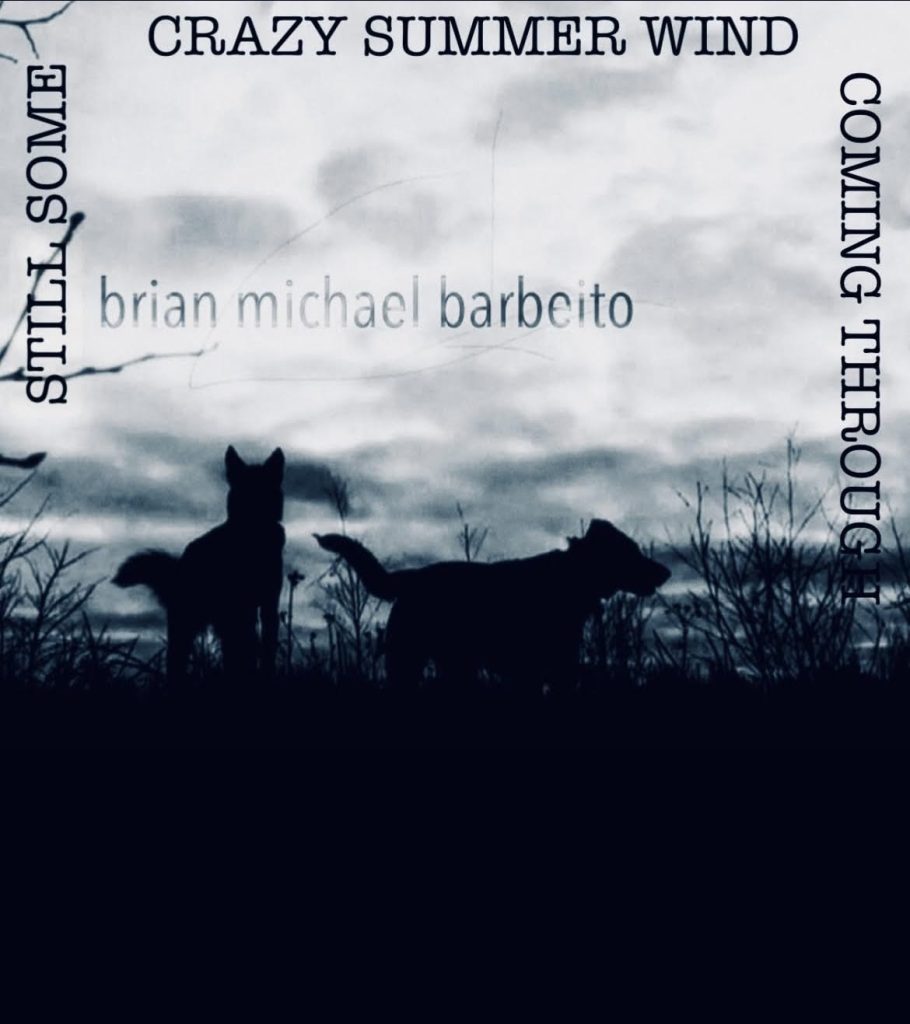
Still Some Crazy Summer Wind Coming Through is a collection of prose poems and photography by Canadian poet Brian Michael Barbeito. The writings combine the themes of the natural world and metaphysics in a braided and interwoven journey seen through the phantasmagoric lens of a world that is both physical and spiritual. They are accompanied by landscape photos taken by the author. This unique and inspiring collection includes an introduction by Cristina Deptula, the Executive Editor of Synchronized Chaos Magazine.
Please comment or contact us at synchchaos@gmail.com if either the Fleury or the Barbeito book interests you for review.
**************************************************************************************************************************************************************
Now for this month’s issue: Reflecting Us Back To Ourselves. These submissions, while depicting or exploring different subjects and ideas, also show us parts of ourselves and how we think. As with a lot of art and writing, they serve as pieces of glass within an angled, composite mirror, showing us what we value and find interesting.

Royal Rhodes’ work illuminates how we can find ourselves within cultural artifacts – books, films, and art – depending on where we choose to focus. Christopher Bernard describes the evocative music of a blind singer and what he saw and would have created from a photo of a child’s footprints at the beach.
Stephen Jarrell Williams pays tribute to a writer who followed her craft and philosophical insights and incidentally found an audience along the way. Mykyta Ryzhykh’s play highlights how each civilization and each person is tasked with discovering and creating meaning in life.
Bach Le’s work speaks to being multiracial and his thoughtful, but imperfect, attempts to capture complex and nuanced human experiences through art.
Tohirova Husnova Nurillo crafts a rhymed and metered poem on the importance and value of precision in scientific measurement that speaks to how we seek and understand truths in nature.
Shaxribonu Qoziyeva highlights the value and beauty of learning and education. Madinaxon Meliqoziyeva grows poetic about the aesthetics and structure of poetry. Sobirjonova Rayhona offers up praise and thanks to a dedicated teacher.
Rayhona Jumaniyazova urges people to use language with elegance and compassion. Gulmira Polotova highlights the humanity, caring, and determination in Zarifa Saidnosirova’s play Oybegim Mening.
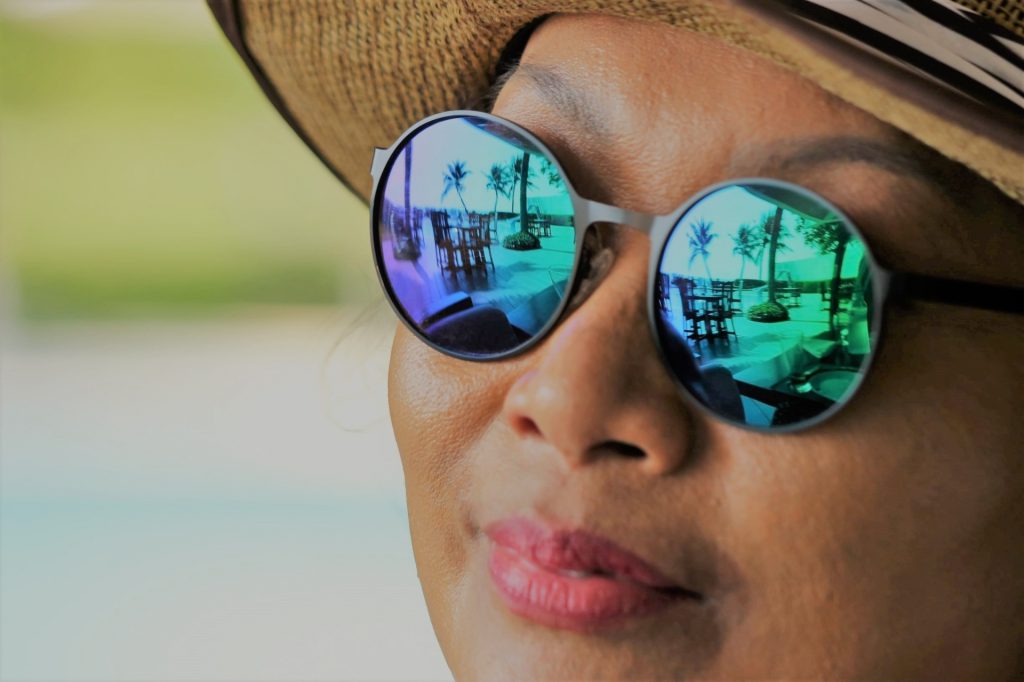
David A. Douglas draws on the cultural language of movies to illustrate negative drama within a family. Ziyodaxon O’roqboyeva highlights the history and cultural importance of Uzbek fairy tales. Martha Ellen Johnson depicts a mother’s grief as a daughter descends into an abusive relationship.
Randall Rogers disrupts toxic masculinity and fascism with a portrait of his more reasonable father and some mixed metaphors. Bruce Roberts’ anti-Trump poems satirize American politics as Pat Doyne’s poetry draws on Biblical metaphor to reflect on the need to spiritually and morally cleanse the American political scene. Mahbub Alam mourns the political unrest and violence in his native Bangladesh, yet affirms his unconditional love for his country.
Richard Modiano reviews Yahia Lababidi’s Palestine Wail, illustrating her hope for the power of compassion to overcome the power of resentment and war. Lilian Dipasupil Kunimasa asks why humans so often act without humanity, but takes comfort in the earth itself and other creatures to outlast us. Faleeha Hassan uses lipstick, beauty, and the secret confidences of lovers as illustrations of the grace and nuance of everyday life that is at risk in wartime.
Nargiza Xusanova points out the value of simple acts of kindness as Kristy Raines’ work expresses gentle, delicate love. Dr. Prasana Kumar Dalai’s poetry renders the sensitive emotions of a newly flowering love and its loss. Mesfakus Salahin’s poem celebrates the tender beauty of a romance and Gulchexra Iskandarova encourages readers to live simple and kind lives. Zarina Rizoqulova evokes the strength, gentleness, wisdom and grace of Uzbek women, who have traditionally cared for their families and the land.

Michael Robinson speaks to the strength he finds through daily reliance on his Christian faith. Chiniqulova Gulsora finds inspiration and love through practicing Islam. Jacques Fleury’s self-exploration at the end of summer prepares him for a fresh beginning.
Sayani Mukherjee’s piece reflects on how it can be difficult to take joy in simple summer pleasures while the world is burning. Regina Lawless sends an excerpt from her book Do You that depicts her grief on losing her husband. Nosirova Gavhar’s tender story conveys the loneliness and pervasive nature of grief.
Taylor Dibbert comments on the increasing fear in many modern societies. Bill Tope’s story highlights the slippery slope we head down when we begin censoring books and ideas.
Rashidova Shahrizoda Zarshidovna extols the imaginative potential of books and reading. Mark Young graces us with the acrobatic swirls of birds and words on the page. Jim Meirose’s short story plays with words and fragments of narrative and speech. Vernon Frazer’s concrete poetry splashes words around the page as elements in a painting.
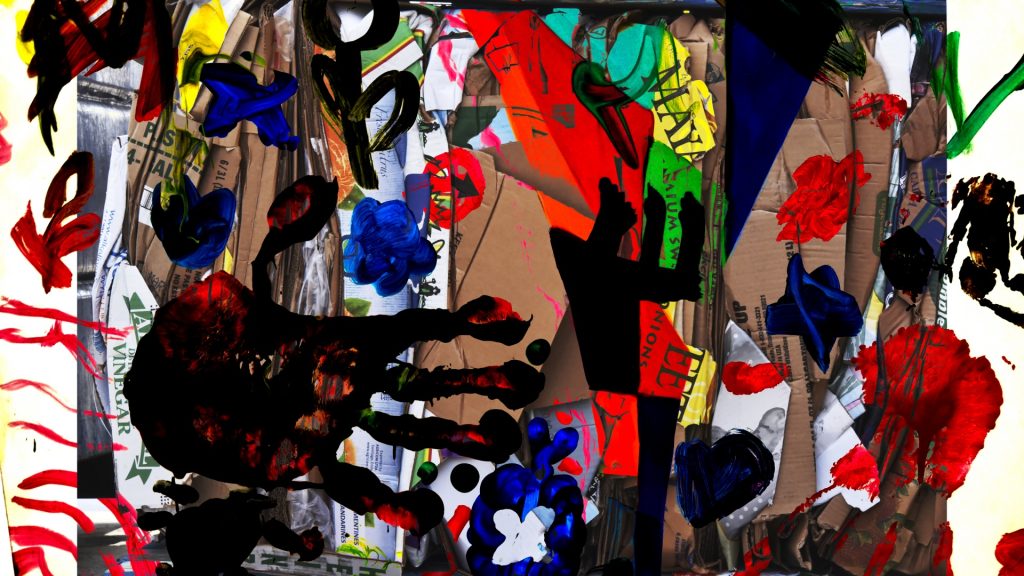
Ziyoyeva Irodaxhon suggests that modern education requires creativity, inspiration, dedication and continual learning on the part of teachers. Sobirjonov Dilmurod Toymurodovich gives thanks for the caring heart of his mother. Sadoqatxon Ahmadaliyeva offers up a poetic tribute to the steadfast love of parents, Dinora Amanbayeva extols the caring and compassion of mothers, and Muxammadiyeva Sevinch Zaripovna feels gratitude for her life while reading of her parents’ past struggles.
Zebo Rahmonberdiyeva points out how gratitude can lead to happiness. J.J. Campbell evokes nostalgia and memories of past happiness amidst his difficult present life.
Shodiyeva Madina points out that happiness comes from within, not from measuring up to others’ standards, as we are all different. Stephen House speaks to humility, not always having to give advice since our world is already full of different people who all consider themselves knowledgeable.
Ismoilova Sevinchoy motivates readers to set aside distractions and pursue their goals. Ozoda Turaqulova proudly celebrates her work anniversary at an Uzbek industrial gold mine. Ahmad Al-Khatat entreats those in recovery to continue their healing journeys.

Jackie Chou speaks to identity, selfhood, and wild and urban nature in her lively and sincere poems. J.D. Nelson’s one-line poems portray brief encounters with the natural world, embedded as we are within it. Kylian Cubilla Gomez’ work highlights the wildness and unruly colors and shapes of nature.
Isabel Gomez de Diego’s photos explore ways we domesticate and encounter the natural world. Daniel De Culla explores children’s complex feelings about eating other creatures, namely, snails. Kurolova Dilnura outlines the study of ecology and reminds readers to care for the environment. O’tkir Mulikboyev encourages proper care and stewardship of nature and water.
Brian Barbeito sends up a fantastical vision of electricity, enlightenment and ladybugs.
Mark Blickley interweaves figures and colors and mixed media to craft intricate collages. Brooks Lindberg touches on cosmology, jazz music, history, and philosophy in his poems. Duane Vorhees illustrates the volatile and sensual nature of romantic love and attraction. Dr. Sajid Hussain evokes the intensity of spiritual emptiness and the joy of enlightenment.
We hope that this issue helps you in your quest for meaning and joy.
Poetry from Tohirova Husnova Nurillo

The Measure of Precision
In the realm where science meets the sky,
Where numbers dance and theories fly,
Metrology stands, a guide so true,
To measure the world in shades of blue.
It charts the stars, the time, the space,
With precision and a steady grace,
From quantum realms to cosmic light,
It seeks to capture the infinite’s might.
In every tick of time’s own hand,
In every grain of shifting sand,
Metrology’s lens, so sharp and clear,
Unveils the truths that we hold dear.
It measures moments, wide and small,
From towering heights to the ocean’s fall,
With instruments of steel and gold,
It tells the tales that science tells.
From temperature’s rise to pressure’s fall,
It gauges the earth, the sea, the sky’s enthrall,
In labs and fields, its quest unfolds,
The universe’s secrets, in its grasp, it holds.
With every gauge and every scale,
It weaves a tapestry that never fails,
To bridge the gap from thought to fact,
In a world where precision is an unbroken pact.
So here’s to metrology, so wise and grand,
With its compass guiding every hand,
In the dance of data, it leads the way,
Unraveling mysteries, day by day.
Tohirova Husnora Nurillo qizi was born on November 14, 2003, in Parkent district of Tashkent region. She is a third-year student at the Tashkent Textile and Light Industry Institute. She is a member of the XDP party, a leader of the Youth Academy, the author of 10 articles and theses, a winner of the “Golden Pen Award 2024,” and a recipient of the “M.A. Xadjinova Scholarship.”
Poetry from Sobirjonov Dilmurod Toymurodovich
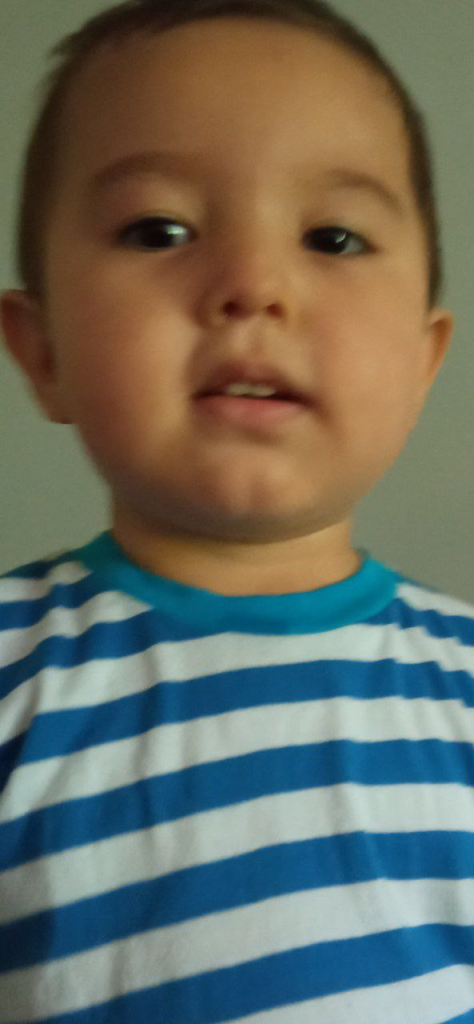
A Mother’s Eternal Embrace
In the cradle of the dawn’s soft light,
Where dreams are woven through the night,
There lies a love, both pure and deep,
A mother’s heart where angels sleep.
Her hands are gentle, yet so strong,
A balm for sorrows, a soothing song,
In every touch, a world is found,
Her love, the ever-constant ground.
Through sleepless nights and days so long,
She carries burdens, sings a song,
Her whispers calm the storms inside,
In her embrace, the world’s at guide.
Her eyes, a mirror of the skies,
Reflecting hope, where sorrow flies,
With every tear, a lesson shared,
In every laugh, a heart repaired.
She builds a haven, warm and bright,
A beacon through the darkest night,
Her love, a fire that ever burns,
A light for every heart that yearns.
In every word, a promise true,
Of dreams fulfilled and skies of blue,
A mother’s love, so vast, so grand,
A timeless touch, a guiding hand.
So here’s to her, both near and far,
The quiet strength, the shining star,
In every heart, her love does grow,
A mother’s love, forever aglow.
Sobirjonov Dilmurod Toymurodovich was born into an intellectual family in Vobkent district, Bukhara region. He has a strong passion for creativity and is constantly supported by his parents. He enjoys writing poetry, short stories, and ghazals. His works have been published in numerous newspapers and magazines. He has participated in countless competitions and won many prestigious awards.
He is growing up to be a dedicated individual ready to sacrifice his life for his homeland. He will raise the name of his nation, Uzbekistan, to new heights, as it is his duty. The blood of his homeland flows in his veins. He aspires to be a soldier and grow into a brave and courageous son who will make the glory of Uzbekistan a legendary tale.
Poetry from Zarina Rizoqulova
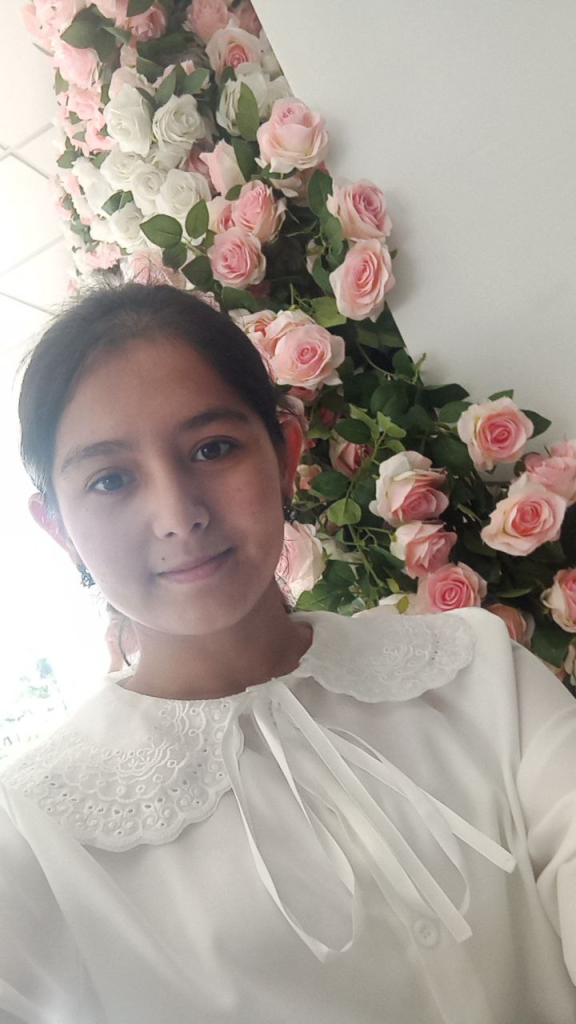
In the Heart of Tradition
In the heart of Central Asia’s gleam,
An Uzbek woman, like a dream,
Grace and strength in every stride,
In her eyes, traditions reside.
Her silken dress, adorned with care,
Reflects a history rich and rare,
Patterns woven through time’s thread,
In each design, stories spread.
She dances with the winds of time,
Her laughter, like a bell’s sweet chime,
From dawn’s first light to evening’s shade,
In her hands, the world is made.
With a heart both fierce and kind,
She holds the wisdom of her kind,
Her spirit, like the mountains strong,
In her love, we all belong.
Through fields of cotton, sunlit bright,
She works with passion, day to night,
Nurturing the land and kin,
In her toil, life’s rhythms spin.
Her voice, a soothing lullaby,
Whispers secrets of the sky,
Legends of the ancient past,
In her words, they ever last.
An Uzbek woman, proud and free,
A symbol of resilience, she,
In every heart, her story flows,
A timeless tale that always grows.
From the city’s bustling markets wide,
To the tranquil village’s side,
Her presence, like a guiding star,
Shows us who we truly are.
Zarina Rizoqulova was born on August 31st, 2004, in Bukhara region. She is currently a student at the Pedagogical Institute of Bukhara State University. She is very passionate about creative pursuits. In her free time, she enjoys writing poetry, short stories, and articles.
Essay from Ziyodaxon O’roqboyeva
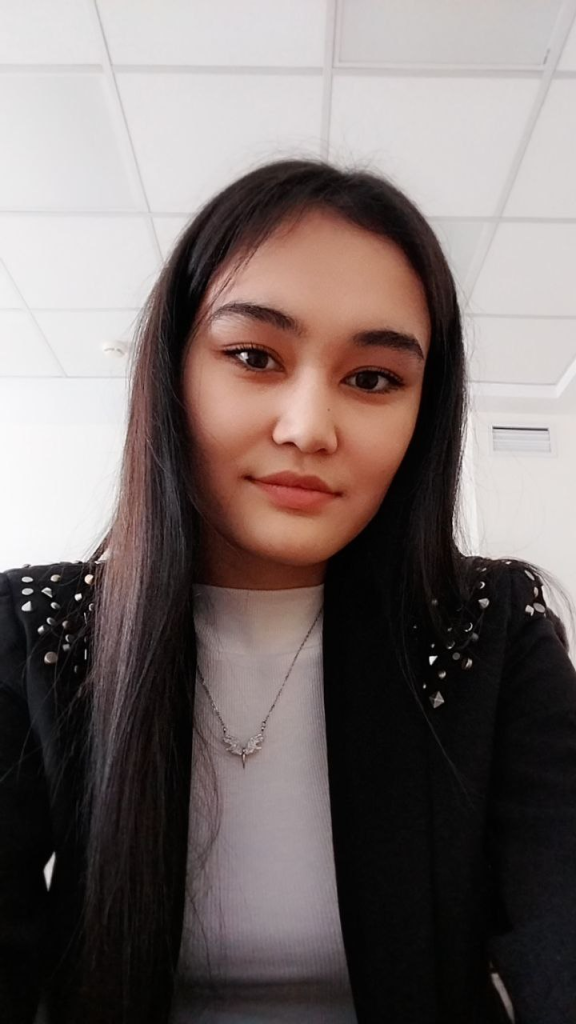
The Importance of Uzbek Folk Tales and Literary Tales
Abstract: Uzbek folk oral literature is very rich and unparalleled. It can be said without a doubt that the oral literature of each nation clearly shows its history. Therefore, if we consider folk oral literature as a spring, it can be likened to a tree nourished by this spring. Through the works of oral folk literature, people learn from the wisdom and bravery of their ancestors, and become acquainted with their great ancestors and their way of life. In folklore, the wisdom, talent, and linguistic richness of the people are manifested. Tales serve as an important source in studying the history, spiritual and cultural lifestyle, inner world, faith, social relations with other brotherly nations, customs, climate, and natural conditions of each nation.
Keywords: Uzbek folk tale, literary tale, types of tales, impact on children
A tale is one of the ancient genres belonging to the epic type, widely spread among the people, reflecting the national values, lifestyle, traditions, and customs that have been formed over centuries. Mainly narrated in prose by professional storytellers, tales have evolved into a unified poetic system with a unique artistic structure and motifs.
The term is mentioned in Mahmud Kashgari’s “Devoni Lugati Turk” and means narrating an event orally. Tales are referred to as matal in Surkhandarya, Samarkand, Fergana regions, ushuk in the districts and villages around Bukhara, varsaqi in Khorezm, and cho‘pchak in Tashkent city and its surroundings. Tales differ from other folklore genres by depicting life truths based on imagination and realistic fabrications, involving magical and enchanting elements, extraordinary events, and the supernatural bravery of heroes.
Fiction is a crucial criterion in tales, forming the basis of plot events and ensuring the resolution of conflicts. Various examples of fabrications serve an educational aesthetic function, acting as a unique artistic depiction tool. Fabrications portray events and phenomena in an unreal or real manner. Based on the participation of imaginative and realistic fabrications and their role in the plot, tales can be divided into two groups: tales based on imaginative fabrications and tales based on realistic fabrications.
The plot of a tale with imaginative fabrications is magical, while the plot of a tale based on realistic fabrications is more lifelike, depicting real events. A tale typically narrates three main goals. The first involves the hero’s bravery and defense of people’s interests against evil forces; the second narrates the hero’s love for princesses or fairies from other lands, finding medicine for the sick, and rescuing people kidnapped by dragons and demons; the third describes the hero’s struggle against injustice and oppression.
The first goal is achieved through the hero’s active effort and supernatural strength, the second with the help of magical tools assisting the passive hero, and the third through the hero’s wisdom and resourcefulness.
Folk Tales: Folk tales are rightfully considered a powerful source of historical facts, providing information about the life and social structure of a particular people. Each nation has created many instructive stories for adults and children, passing on their experiences and wisdom to the next generations.
Folk tales reflect human relationships and changes, highlighting the immutability of basic values and teaching the clear distinction between good and evil, joy and sorrow, love and hatred, truth and falsehood. A unique feature of folk tales is that the deepest social meaning is hidden in simple and easy-to-read text. They also preserve the richness of the people’s language. What kinds of folk tales are there? They can be magical, household, or often about animals.
It is often asked when the first Russian folk song was invented. This remains a mystery, and only assumptions can be made. It is believed that the first “hero” tales were about natural phenomena such as the Sun, Moon, Earth, etc. Later, they were subjected to human influence, and stories of people and animals were included in the tales. There is a hypothesis that all Russian folk stories have a real basis. In other words, some events were retold in the form of tales, changing over centuries and reaching us in the form we are accustomed to.
When comparing folk and literary tales, it should be considered that the latter appeared much later than the former. By incorporating educational ideas, European literature began rewriting folk legends in the 18th century, and by the 19th century, it became traditional to create wonderful plots. Among those who succeeded in this field, A. Hoffmann, C. Perrault, H. C. Andersen, and, of course, the Brothers Grimm are recognized as the genre’s classics.
The similarity between literary and folk tales lies in the repetition of folkloric motifs and the presence of magical attributes, but the literary development of plots and the choice of main characters strictly adhere to the author’s wishes. Moreover, in the second half of the 19th century, literary tales became very close to novellas and even short stories. The works of Russian writers like L. Tolstoy and A. Pogorelskiy and Europeans like S. Lagerlöf and L. Carroll can serve as excellent examples.
Education through Tales: Stories are written in a simple language suitable for children, developing their imagination. For the youngest listeners, tales often feature animal characters, introducing them to the lifestyle and characteristics of specific characters (e.g., Kolobok, Teremok). After reading a tale to a child, they understand the existence of good and evil, loyalty and betrayal, foolishness and cleverness. A well-chosen tale also helps parents cope with crisis situations. All tales contain a moral, through which you can help a child navigate difficult situations. After reading, discuss the hero’s actions and decisions. Positive characters possess the best qualities: hard work, cleverness, kindness, honesty, beauty.
By reading tales to children, we cultivate moral qualities such as empathy and understanding in the child. The child compares themselves to the main character, experiencing situations, showing courage, ingenuity, and compassion. “A tale is a lie, but there’s a hint in it! A lesson for good fellows!” wrote the great Russian writer A.S. Pushkin, emphasizing that a tale teaches the listener the right behavior in certain situations. Without moralizing and instructions, the child develops the right path.
Tales also help develop children’s imagination and creative thinking. Preschoolers bring simple things to life, so they love hearing about the adventures of a soap bubble or a tin soldier. Introduce the story by reading or retelling it. While reading, a preschooler learns to respect books, which is one form of upbringing. By retelling the text, the storyteller rearranges words, changes phrases, and adds comments. The main thing is to tell the story emotionally so that children listen attentively. After reading the book, it’s useful to play literary games and solve riddles to reinforce the acquired knowledge.
References:
– “Uzbek Folklore” textbook – T. Mirzayev, Sh. Turdimov, M. Jo‘rayeva, A. Tilavov
– [Uzbek Wikipedia](https://uz.m.wikipediya.org)
– [Gigafox](https://gigafox.ru)
